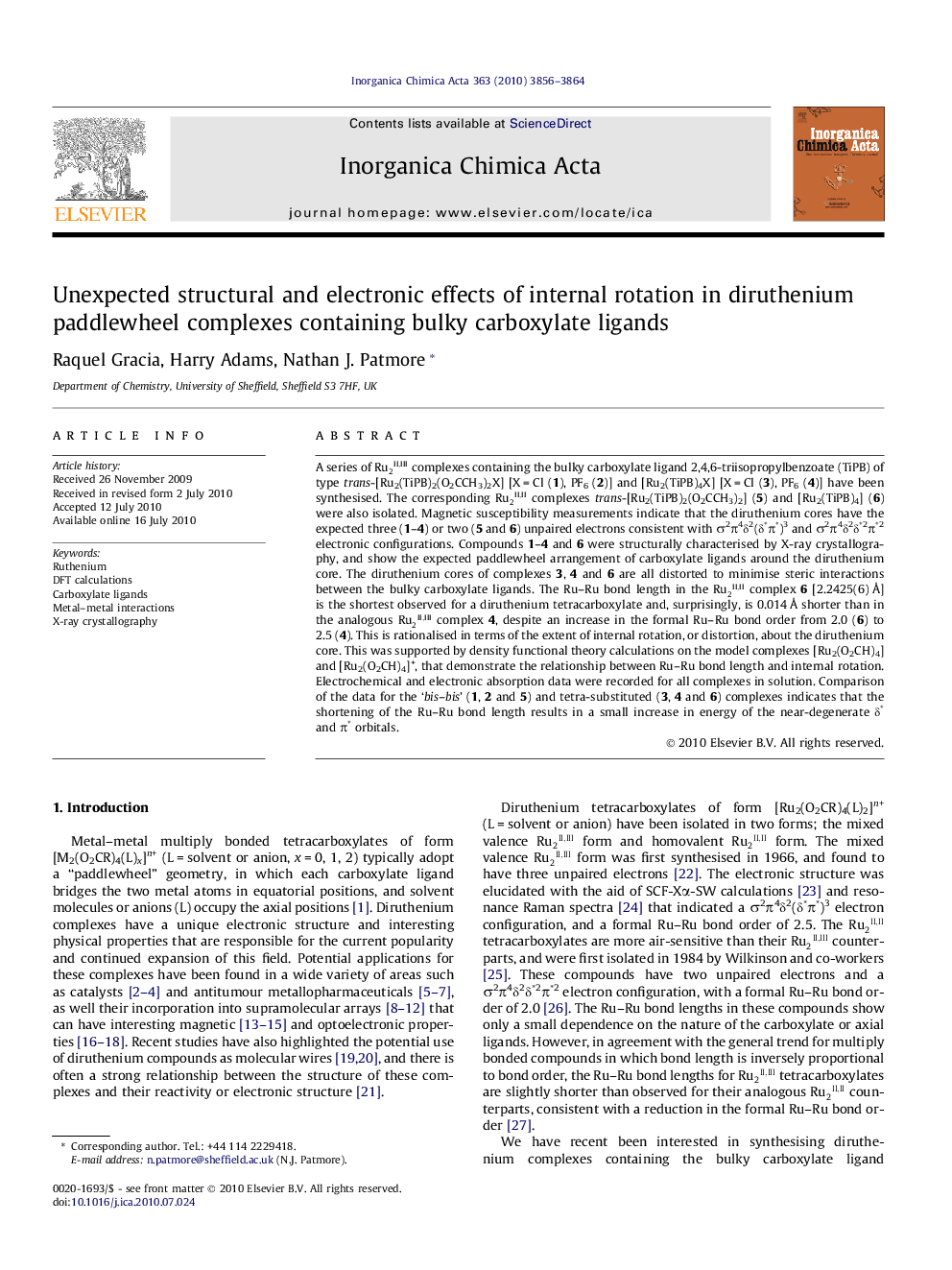| Article ID | Journal | Published Year | Pages | File Type |
|---|---|---|---|---|
| 1307859 | Inorganica Chimica Acta | 2010 | 9 Pages |
A series of Ru2II,III complexes containing the bulky carboxylate ligand 2,4,6-triisopropylbenzoate (TiPB) of type trans-[Ru2(TiPB)2(O2CCH3)2X] [X = Cl (1), PF6 (2)] and [Ru2(TiPB)4X] [X = Cl (3), PF6 (4)] have been synthesised. The corresponding Ru2II,II complexes trans-[Ru2(TiPB)2(O2CCH3)2] (5) and [Ru2(TiPB)4] (6) were also isolated. Magnetic susceptibility measurements indicate that the diruthenium cores have the expected three (1–4) or two (5 and 6) unpaired electrons consistent with σ2π4δ2(δ∗π∗)3 and σ2π4δ2δ∗2π∗2 electronic configurations. Compounds 1–4 and 6 were structurally characterised by X-ray crystallography, and show the expected paddlewheel arrangement of carboxylate ligands around the diruthenium core. The diruthenium cores of complexes 3, 4 and 6 are all distorted to minimise steric interactions between the bulky carboxylate ligands. The Ru–Ru bond length in the Ru2II,II complex 6 [2.2425(6) Å] is the shortest observed for a diruthenium tetracarboxylate and, surprisingly, is 0.014 Å shorter than in the analogous Ru2II,III complex 4, despite an increase in the formal Ru–Ru bond order from 2.0 (6) to 2.5 (4). This is rationalised in terms of the extent of internal rotation, or distortion, about the diruthenium core. This was supported by density functional theory calculations on the model complexes [Ru2(O2CH)4] and [Ru2(O2CH)4]+, that demonstrate the relationship between Ru–Ru bond length and internal rotation. Electrochemical and electronic absorption data were recorded for all complexes in solution. Comparison of the data for the ‘bis–bis’ (1, 2 and 5) and tetra-substituted (3, 4 and 6) complexes indicates that the shortening of the Ru–Ru bond length results in a small increase in energy of the near-degenerate δ∗ and π∗ orbitals.
Graphical abstractA family of Ru2(II,II) and Ru2(II,III) tetracarboxylate complexes containing the bulky ligand 2,4,6-triisopropylbenzoate have been used to investigate the effect of internal rotation on the metal–metal bond length and electronic properties.Figure optionsDownload full-size imageDownload as PowerPoint slide
